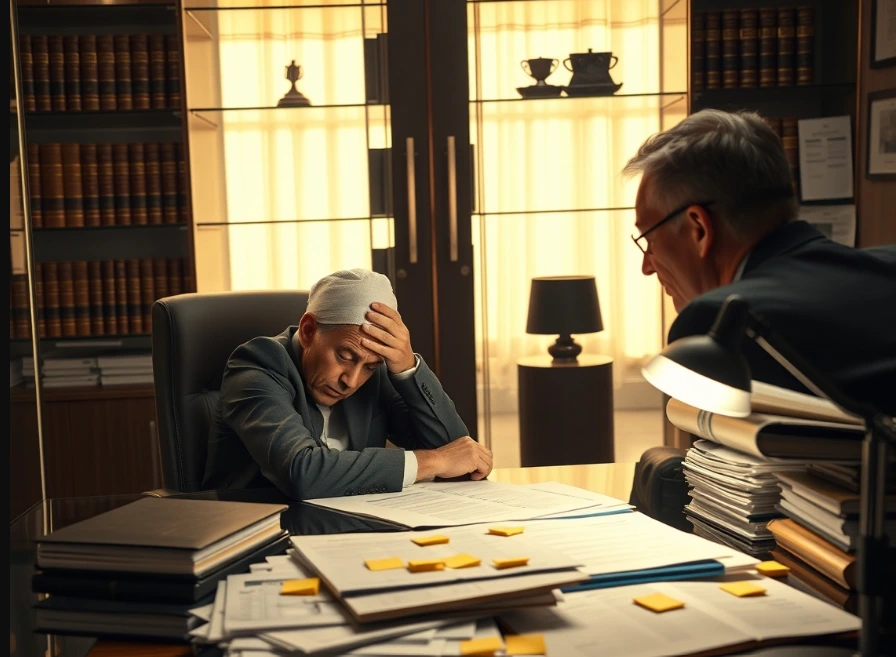What is Pain and Suffering in Legal Terms?
The notion of pain and suffering in the legal context has to do with the physical and emotional pain that one undergoes because of the hurtfulness caused by an act of irresponsibility by another. It is non-economic damage to a personal injury claim, i.e., it is not something that directly has a dollar value such as in a medical shooting bill or lost wage. Nevertheless, it is key in ascertaining the value of a lawsuit.
The courts acknowledge that an injury is more than financial losses. The individuals who are victims can experience chronic pain, PTSD, anxiety, depression or impaired quality of life. This is the reason why the goal of pain and suffering litigation is to recover damages that cannot be measured but can be appreciated in terms of the hardships suffered. An experienced pain and suffering lawyer will enable the provision of convincing evidence to argue these intangible damages.
When Can You File a Pain and Suffering Claim?
Pain and suffering claims can be filed by a person who is injured because of negligent actions or deliberate acts of other people. This usually happens under the personal injury cases such as car accidents, slip-ands, medical malpractice or product with defects. The trick here is to demonstrate that the injury did not affect you only physically, but also emotionally and mentally.
An injury has to be preceded by a wider claim and a personal injury lawsuit in general. To sue pain and suffering, it is not possible to file a complaint on pain and suffering without the liability and the damages. States, which have the no-fault car insurance laws, like Florida or Michigan, provided that you can only sue because of the pain and suffering in case your injuries qualify as a serious one according to the legal definition of a given state.
Pain and Suffering in Car Accident Cases
Physical injuries that accompany victims of car accidents are not the only concerns that may be encountered by the victims involved in car accidents; they are also exposed to emotional trauma, anxiety, and inconveniences in their everyday lives.
Though it is simple to prove damage by broken bones or whiplash, emotional suffering is difficult to mark. This is where the claims of pain and suffering come into picture. Such damages assist in covering the visible and invisible loss that results when involved in a crash, and even when another motorist was involved through fault.
Physical Impact of Auto Accidents
The instant repercussions of an automobile collision may charge you with injuries that impair your mobility, autonomy, and skills in employment. The physical effects also tend to involve long-term disability and even soft tissue damage and can be associated with prolonged discomfort, surgeries, or rehabilitation. These bodily injuries form part of your pain and suffering case.
Emotional and Mental Distress
In addition to the physical pain, a number of their victims develop psychological problems such as post-traumatic stress disorder (PTSD) and depression, as well as chronic anxiety. They can have flashbacks, phobia of driving or sleeping difficulties. Writing a record of this emotional distress in the form of therapy records or even medical examinations becomes the most important factor to harden a pain and suffering case.
Using Evidence to Strengthen Your Claim
Insurers tend to dispute non-economic injuries and therefore it is important to present well supported documents. This comprises the medical records, photos of the harms, notes by therapist, prescriptions and testimonies by witnesses. The more you demonstrate how the car accident has influenced your everyday life, the better justification you have for the pain & suffering due to the auto accident.
How Lawyers Help with Pain and Suffering Cases
Pain and suffering lawyers are well versed with issues of litigation to guide you through complicated claims procedure. They know how to estimate non-economic harms and negotiate more compensation. An experienced pain suffering lawyer is aware of what facts are powerful and the way they can be presented to the insurers or courts.
Insurance companies also have ways of paying you less especially by using tricks that can be cushioned against by hiring attorneys. Insurers might challenge the validity of your emotional anguish and say that your sufferings have nothing to do with the accident. The presence of a pain and suffering attorney offers protection to your legal rights and increases your likelihood of obtaining a just result by a far margin.
Calculating Settlement for Pain and Suffering
A pain and suffering settlement has no precise formula on how to calculate the value. Two methods are however common, the multiplier method and the per diem method. A multiplier approach entails a factor multiplying the overall economic losses (such as medical expenses) by a figure which is normally between 1.5 and 5 based on the intensity of suffering. The per diem system is one that puts financial value in terms of suffering and pain to the victim, and in that case, multiplying them by the amount of days that the victim suffered.
The other determinants under consideration entail the kind of injury, the length of an injury, medical treatment or care, the emotional side of injury, and the way the injury changed the lives of the victim on a day-to-day basis. Awards that relate to jury perception are also possible and therefore professional representation is very vital in such cases.
Filing a Pain and Suffering Lawsuit
The liability of the other party should be proved in order to file a lawsuit on pain and suffering. This normally entails the collection of evidence in the form of accidents report, medical evidence and expert witnesses. After the claim has been initiated, both the parties can negotiate a settlement. In case of no agreement the case can be taken to trial.
There is a timing issue as well. Each state has a time limit, also known as a statute of limitations to place a claim of personal injury. Failure to meet the deadline can cost you the right to include compensation. A pain and suffering lawsuit is a justice solution but one that should be undertaken tactfully and within the time prescribed by the law.
Choosing the Right Attorney for Your Case
Choosing the appropriate pain and suffering attorney will mean a successful case. When searching to find a personal injury project, seek an experienced lawyer in personal injury cases, with good past settlement history and with positive reviews by clients. They must give free consultation and their fee must be in the form of a contingency where they only receive payment in case of a win on a case. These are some of the main qualities:
- Good communication ability
- Familiarity with local laws on personal injury
- Practice on dealing with other pain and sufferings cases
- Experience of trials when negotiations in resolving the case face failure
- Good testimonials by past customers
With the right legal representation, your claim will be given its due value and you are also likely to obtain maximum payment towards your pain and suffering.





